April has been busy… starting with a week of Sun ‘n Fun; then a gathering of LSA seaplanes at my home airport the day after; followed by three days of Aero Friedrichshafen in Germany (it runs four days but I had to miss the first); concluding with a journalists-only event at Rotax Aircraft Engines. As a result, my posts to this website may be out of date order but the good news… I have lots to report.
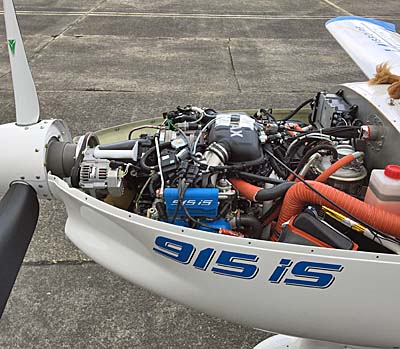 I will cover many aircraft stories, but allow me to take the most recent first: flying the brand-new Rotax 915iS and comparing it to the 912iS, although not in the same airframe. Other than official Rotax pilots and select airframe builders, we were among the first to experience the powerful new engine from the world’s leading producer of engines for light aircraft.
I will cover many aircraft stories, but allow me to take the most recent first: flying the brand-new Rotax 915iS and comparing it to the 912iS, although not in the same airframe. Other than official Rotax pilots and select airframe builders, we were among the first to experience the powerful new engine from the world’s leading producer of engines for light aircraft.
First Impressions of 915iS
I flew in each aircraft with Rotax’s Christian Sixt, an American flight school-trained pilot with an impressive list of FAA certificates. Naturally, he is also intimate with the 915iS.
Starting was as with any Rotax 9-series engine I’ve ever flown. Immediately the engine burst to life.
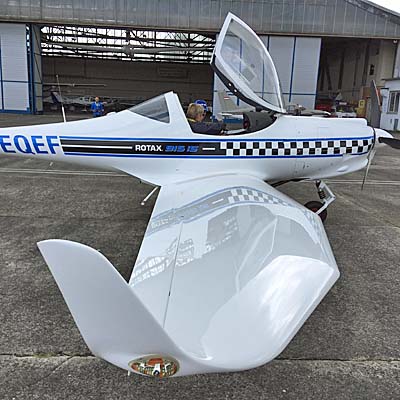
Flying the new 915iS in an Aquila light aircraft.
One difference from prior experience was the “Stock Box” instrument (more formally, Stock Flight Systems Engine Monitoring Unit or EMU) developed by Michael Stock in collaboration with Rotax.
Michael is the key man behind the Aerotech/Rotax/Searey/MT Prop project to develop and refine a single lever control for light aircraft (see our video explaining this, or read our article).
The Stock Box proved most helpful in observing many factors about the new engine. As you can see in the nearby images, it provides, among other information, a percentage of throttle, fuel burn, and engine revolutions plus prop speed expressed via manifold pressure. If the latter is not familiar to you, don’t worry about the detail for now but see an important point below*.
Soon after advancing the throttle, I noticed greater acceleration but two other parameters were more obvious. The climb angle seemed vigorously steep, although this was my first experience in an Aquila aircraft so I had no basis of comparison. Nothing like a 40% boost in power to launch an aircraft into the sky.
As the fast car guys say, “Speed costs money. How fast do you want to go?”
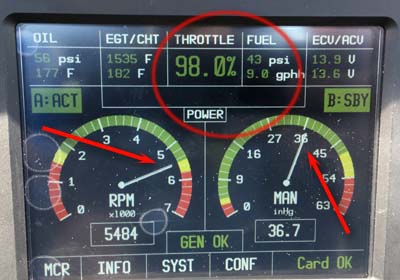 Fuel consumption was higher than I expected, but speed was also higher. To get below 3 gph, a surprisingly low consumption rate, speed dropped below 100 knots true or 85 indicated. When zipping along faster than 170 miles an hour true, consumption rose to the 7-9 gph range.
Fuel consumption was higher than I expected, but speed was also higher. To get below 3 gph, a surprisingly low consumption rate, speed dropped below 100 knots true or 85 indicated. When zipping along faster than 170 miles an hour true, consumption rose to the 7-9 gph range.
The 915iS fuel injected, turbocharged, and intercooled engine can produce 141 horsepower for five minutes, then sustain 135 horsepower indefinitely.
Once at altitude, Christian demonstrated use of the throttle and prop controls — this was not a single lever control airplane — to adjust for speed or economy. As you can see in the contrasting Stock Box images, we saw as low as 2.8 gallons per hour resulting, of course, in lower speed flight.
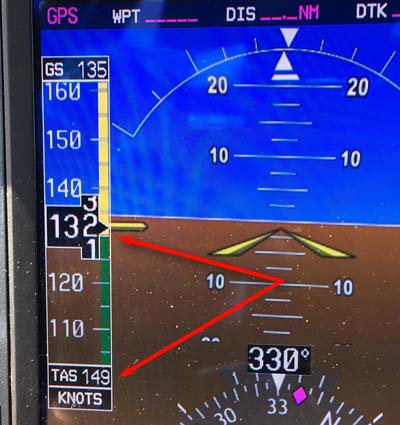
A fellow aviation journalist — a pilot of 300 different aircraft — Dave Unwin felt the 915 started “softer.” He also felt it seemed to run slightly smoother. Rotax engine experts felt most of this is attributable to software and the same code can also be applied to the 912iS.
Compared to the 912iS
Rotax aircraft engine manager Marc Becker arranged a second flight with Christian, this time in a Diamond Katana powered by a Rotax 912iS. While from different manufacturers the two airframes I tested were more alike than different.
Although I loved the power of the 915iS with its shortened takeoff roll, thrilling climb to altitude, low-speed fuel economy, and quiet running, the 912iS is more my kind of engine. It was still powerful. Climb was 1,000 fpm. It has proven reliability. Mainly, though, I felt the 912iS engine is better suited to the light aircraft I cover on this website. To me, the 915iS is better suited to larger (heavier) aircraft or those serving particular missions, such as LSA seaplanes or aircraft operating from high elevation fields.
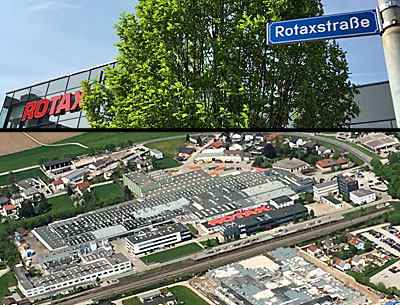
So established is Rotax Aircraft Engines in Gunskirchen, Austria that the street was renamed to Rotaxstraße (Rotax Street).
In flying the 915iS I revisited the task of managing throttle and prop controls. I have constant speed prop time, a fair bit of it, but that was some years in my past. What the refreshed experience told me is that FAA was right to say this is unnecessarily complex for recreational pilots. While not especially hard — you can hardly get in trouble with such equipment on a modern, liquid-cooled Rotax — you nonetheless have to fiddle with levers and knobs, and keep an eye on instruments. It is more than most sport pilots may prefer and more than some should manage perhaps. Hence the push for single lever control, a simpler way to handle in-flight prop control. Experienced pilots may prefer the control implied by working the levers just as some drivers prefer a stick shift car to an automatic transmission. For everyone else simplicity is probably best.
Now a few years after the 912iS was released, it has become a well refined engine, IF it is installed according to Rotax’s manual and instructions.
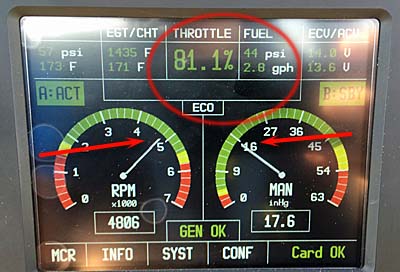
Marc Becker summarized, “The 915iS is about 12 kilos (26 pounds) more for the engine only; 40-50 more pounds when installed and about €3,000 ($3,750 at today’s exchange rates) more than the 914.” It is significantly more than the 912iS, as you should expect for an engine with substantially more power and the ability to use that power up to higher altitudes.
Fuel needs of both 915iS and 912iS are essentially the same. Thomas Uhr, head of Rotax’s Austria plant and a longtime engine expert and enthusiast — and also a pilot — advises the highest octane auto fuel, preferably without alcohol, to get the most power and best results.
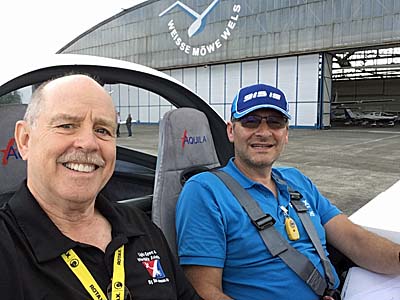
I enjoyed two flights with Rotax pilot Christian Sixt; this image places us in the Aquila at the Wels airfield where a large club operation is quartered.
He also explained that (perhaps surprisingly to some readers) the 915iS compression ratio is lower to allow for the turbo boost. “Stress is actually a little less therefore with the turbo engine,” he said.
Rotax’s 915iS uses the same displacement as the 912iS. In a weight-to-power comparison — grams per kilowatt hour — fuel consumption is only about 6% higher in the more powerful engine.
Entering the Market
Marc indicated that 200 915iS engines have been delivered into the Rotax network including distributors around the globe. Of these, “120 are now with end customers,” he noted. “About 20 different airframes are flying today.” Some 46 different manufacturers are working to prepare the new powerplant.
“Our expectation is to have 400 engines out in the field by year end,” Marc added.
* On the point about an in-flight adjustable or constant speed prop, Rotax Aircraft Engines top boss Thomas Uhr made an important statement when I asked about fixed pitch props on the 915, “All our engines can use fixed pitch props.” As a leader of a public company, he spoke carefully, but the suggestion was clear: Yes, a fixed pitch 915iS is coming, although today the engine is only driving an in-flight adjustable prop.


Dan;
Where can I see fuel burn/altitude charts for the 915is engine?
Thanks, George
In the interest of getting this out now (I’m away from my office), I will just say I’d be surprised if that kind of information is not on the FlyRotax website. When I can I’ll look myself, perhaps I will add to this comment. Yours is a good request so if it’s not available, I’ll contact the company.
We are interested in development of sea plane with passenger capacity of 15 plus passenger with a turbine twin engines. We have excellent design capability skills available in metal or composites.
We also are interested in engine overhaul specialty center with state of art facility available for immediate. occupation
Such an aircraft is far outside our area of reporting. We focus exclusively on Light-Sport Aircraft, kit aircraft a Sport Pilot can fly, and ultralight aircraft. We leave passenger aircraft to other magazines or websites.
Many years ago flying a 182 into Townsville combined military civilian airport – aircraft everywhere more radio chat than a wireless.
Got a little anxious on approach.
Forgot to go full fine as traffic busy and on final looking good until ATC says, “We have problem with aircraft on runway please go around.”
Acknowledged that and hit the throttle. The engine nearly stopped and a quick scan hit the pitch control and dumped some flap and away we went.
On top of that directed to try another runway (first time at this location). After trying to get my bearings with ATC, I landed uneventfully.
Glad it was a VFR flight in good weather.
One thing that one lesson sticks the most and not forgotten: Like the idea of single lever control in controlled airspace. Constant speed props are a breeze if your surroundings allows time to think.
But more air is added in the combustion chamber … He also explained that (perhaps surprisingly to some readers) the 915iS compression ratio is lower to allow for the turbo boost. “Stress is actually a little less therefore with the turbo engine,” he said.
That sounds dubious to me. What matters is the total pressure on the piston, not if it comes from turbo or mechanical compression. [Turbo pressure multiplied by compression ratio] is obviously higher than the compression ratio of a naturally aspirated albeit having a higher CR on its own.
The compression ratio is one thing the pressure inside the combustion chamber is another thing, in a turbo engine the the air is forced inside the combustion chamber in a normal engine is aspirated, that’s why even at lower compression ratio the pressure inside a turbo engine is much higher.
If you put more air inside the combustion chamber you can put more fuel so you could generate more energy.
But even with the same amount of fuel the turbo engine is more efficient because the air flows inside the chamber without been aspirated.
Hey Dan,
Great article! I’d love to put this engine on an AeroTrek. I’ll have to ask if it’s possible.
Will you be at the DeLand Aviation Showcase?
Hi Tyler: Thanks for your kind remark. Yes, only Aerotrek can advise about the 915 availability. I’d be a bit surprised if this conservative company embraced that. It’s quite a bit more costly and is more power than needed on Aerotrek. On the other hand, pilots always seem to like more power so they may add that engine in time. *** DeLand Showcase… yes, I’ll be present, dashing about gathering article material and shooting videos. I hope you enjoy!
Hey Dan,
I was curious… do you know of any experimental aircraft companies that are offering kits that can accommodate the 915is? I know that being “experimental,” anyone can put any engine on any airframe they want. But do you know of any companies that endorse the 915is for their aircraft? Just curious. Thanks.
Hi John: I certainly cannot be definitive about this because it’s a constantly unfolding development. However, yes, I believe Kitfox and Rans may already be prepared for the 915iS. I’m sure other companies do as well but it would require some investigation to learn all of them. Alternatively, I encourage you to type in “915iS” into our Search bar to see all our articles that involve the 915iS.
Thanks so much for the info Dan.
Hi John: You are most welcome. Thanks for reading and watching!
What make and model of turbocharger does Rotax use on the 914 and 915is engines?
Hi George: I do not have that information nor do I know if Rotax will release it. I can inquire, but so can you, directly with the engine manufacture.
Just SuperSTOL coming along ok …working out 915 problems. Using an Airmaster prop from New Zealand,
which has a control box. Much better and cheaper than MT prop.
Hey thinking about a 915 on a superstol. Do you have an update? Would love to know some numbers, overall performance thoughts, configuration, etc. any and all info you can provide would be golden. Thanks!
Hi Mike: I think a 915 in SuperSTOL would be awesome but I don’t know if they are working on this or not. Please contact Just Aircraft.
Any insights on the 915 in a SuperSTOL? I’m about to take the plunge!
Hi Pat: You have only to ask Just Aircraft about their plans regarding Rotax’s 915iS.
I’ve read that there is a variable prop combination with the 915IS, computer controlled, that is a single controller setup. Would end the argument.
Hi Bill: You are correct. Here’s our video on a system called “Single Lever Control,” which LAMA has promoted with some success to FAA for consideration in their ongoing Rulemaking update to LSA and Sport Pilot. Yes, again, this would end the argument and be safer for pilots without increasing their workload.
Brilliant, agreed; long overdue; also makes a go around less complex at a time it matters most
Dan, thank you. I like the technical details. I think LSA/SLSA is the way I want to go and am trying to figure it out. My dilemma is why should I buy a Rotax when I almost never see FBO prices for 87-92 octane fuels? We live in the KMNE/KDTO area and seek advice. I’m happy to talk more at our e-mail or even here.
Respectfully,
John Good
[I am] building a Just Aircraft SuperSTOL with rotax 915 engine …not a simple task! @#$%^&
[Is] anyone else out there doing same?
[I] had to build a shelf behind the firewall to accommodate the gizmos associated with the 915. hoping it will be good choice. I live at 5,000 feet altitude, so a turbocharger is a must. [I] am planning to add an Airmaster electric prop. [I] was going to go with MT props, but they seem to be unresponsive.
Would love to see some pics of your install. superstol2019@miketiffee.com
Hi Mike: I don’t know what airframe you refer to regarding a 915iS install. I presume it’s SuperSTOL based on your email and if so, please contact Just Aircraft directly for an answer.
Hey Dan, thanks for all the great videos. I was replying to Jay who said he was doing a SS build with a 915 and was hoping to see what he mentioned in his post. Thanks again, love all the interviews and flight videos.
After a 4-month break, we are back at it. A new Airmaster propeller has arrived; it is a beautiful piece of
industrial art! We are about 90 percent done and 90 percent to go. We have been having to do
a lot of modifications to accomodate the 915 and Airmaster prop. We are going to have to
extend the cowling 3.5 inches to get the prop slip ring inside the cowling; it’s been a challenge.
Hi Dan,
I’ve been loving your reports! Thank you so much. Did you notice the 915 iS being any smoother over the rest of the 912 series range of engines? Thanks!
Hi Drew: Thanks for your kind words. I’m pleased you appreciate the effort. *** I didn’t notice the 915iS was more smooth than the 912iS I flew later that day, but it was certainly a smooth-running engine. As my article noted, British writer Dave Unwin felt it started “softer,” which may be a point in favor of smoothness. I found the engine to fly flawlessly in my experience …and powerfully!
Dan,
Why in God’s name do you insist on perpetuating the idea that pilots with a Light Sport or Recreational license are incapable and inferior to someone with a PPL? Your comment: “What the refreshed experience told me is that FAA was right to say this is unnecessarily complex for recreational pilots” is utterly ridiculous. Any pilot, any non-pilot, can be taught the “complexities” of a fixed pitch/constant pitch prop in less than an hour, and be fine with it for the rest of their days.
Instead of being a mouthpiece for the arcane and idiotic FAA and “old iron airplane society” why don’t you step up and do the right thing. Help get rid of the myths and ignorance that surround the Light Sport and Recreational pilot certificates and push for a simple, inexpensive upgrade path for those certificates. We already do it for Light Sport and to Light Sport Sea. Let’s do the same thing for increased weight, complex, and night. Fly with an instructor, show your competency and get signed off.
Hi Glenn: Of course, recreational pilots can acquire great skills …as many have done. However, at the most basic level of Sport Pilot certificate, requiring only 20 hours of dual and solo, I don’t believe a pilot should be reasonably expected to also learn about about in-flight prop adjustment; he or she may have no need or desire to acquire that skill. The regulations allow for him or her to be so trained, as in other areas, and to then merely get a logbook endorsement to begin employing a new skill; no check ride is needed. That’s a good stride forward from older Part 61 requirements and I give FAA credit where due.
I have also reported that the agency made errors previously, such as demanding reciprocating engines (thereby inadvertently eliminating electric), and we are working to find remedies. Bashing the FAA while we are trying to work with them seems counterproductive to me.
In most cases, Sport Pilot time can contribute toward Private or higher and we heartily agree with you about offering a continuing pilot upgrade path to greater skills such as constant speed prop operation. Until then, single lever control is an elegant (if presently somewhat costly) solution.
Hey Reverend, your overreacting to Dan’s comments. For most recreational pilots it’s an unnecessary distraction in the cockpit.
Late to this party, I fly constant speed props and appreciate them. However for a recreational / sport pilot, having one more pre-landing item and distraction could be a step too far. Just pursue a PPL if one wants to increase the complexity, that’s what it’s there for, and it’s not at all difficult to do.
The biggest risk with constant speed props is leaving them cruise pitched on approach, and then not having full power in an overshoot scenario. This is a surprisingly common accident factor in floatplanes in particular for whatever reason.
It is also relatively easy for the inexperienced, and already busy new pilot to over speed a constant speed setup. Overall I would argue better minds than ours made a good call.
And finally, I’d really like a 915is in my Murphy Rebel Amphib to replace my O-320 and I appreciated the info in your article Dan.
Glad you liked the article. Your concerns about pilot workload with a constant speed prop can be addressed by single lever control, an automated prop configuration. Their state of development appears good now but prices need to come down and regulations need to be completed as presently forecast.